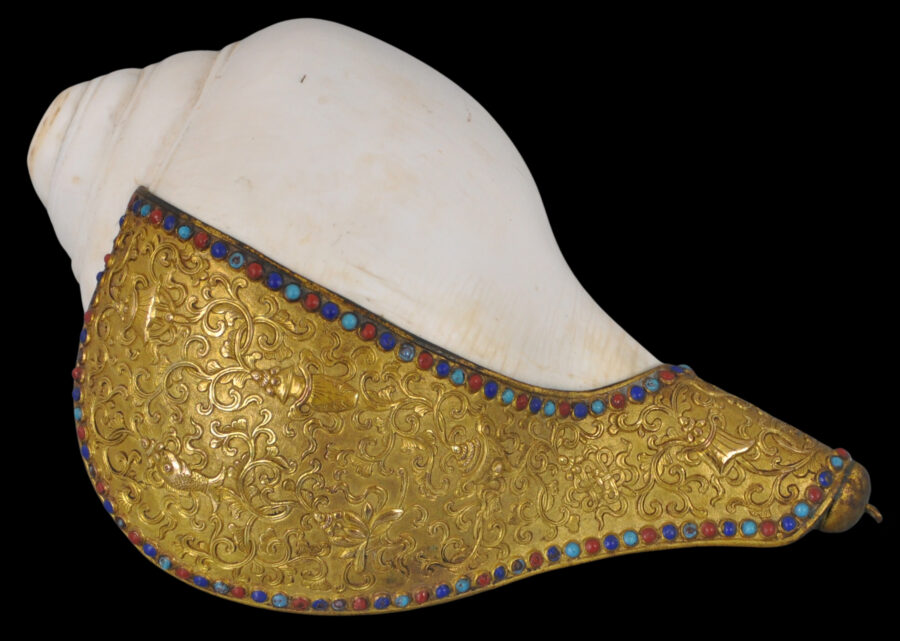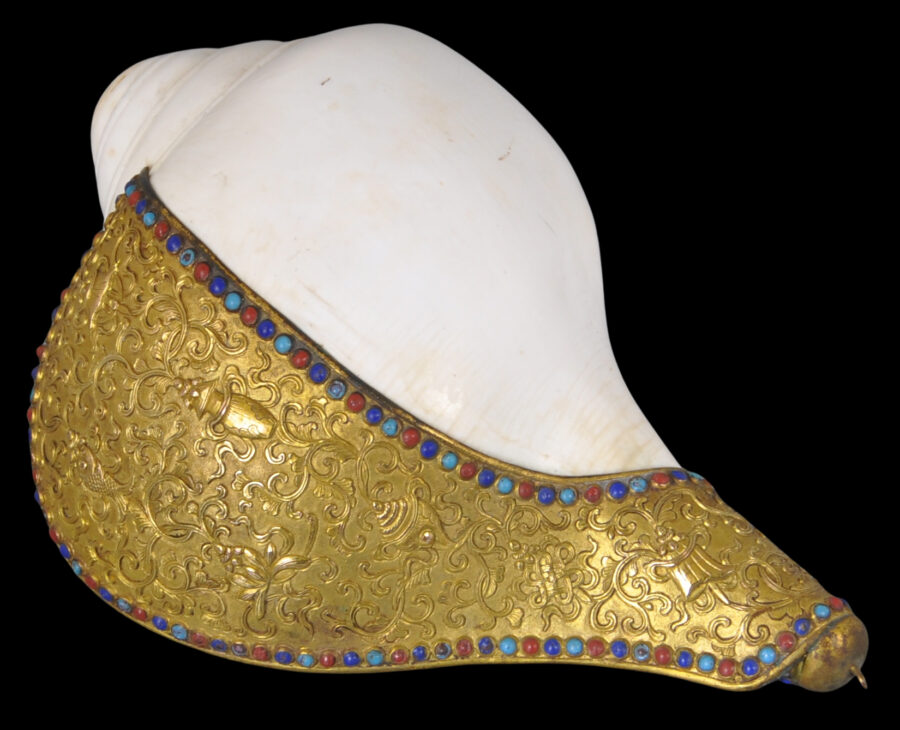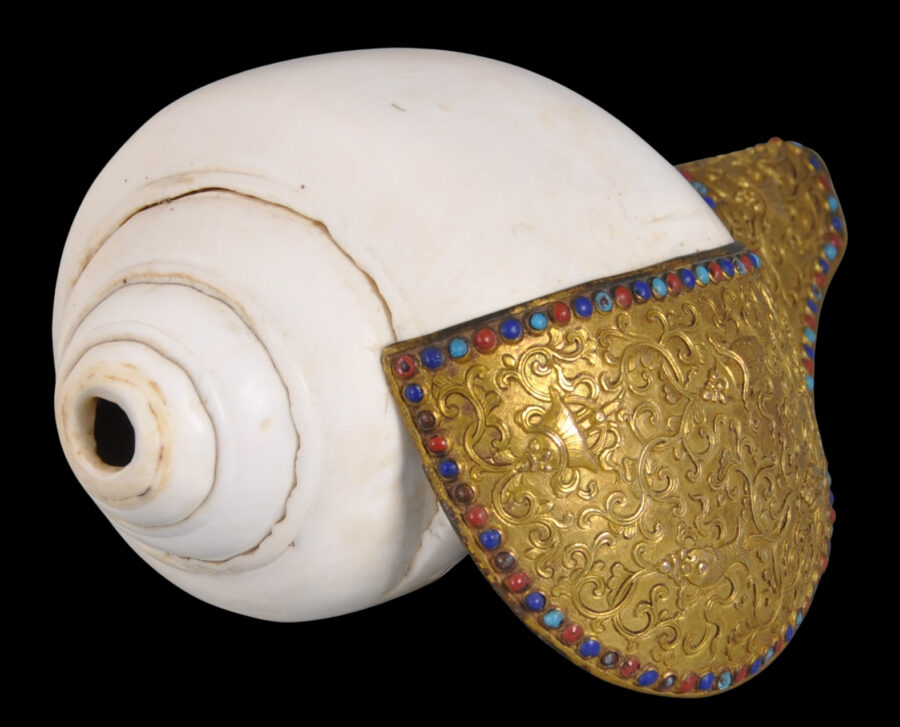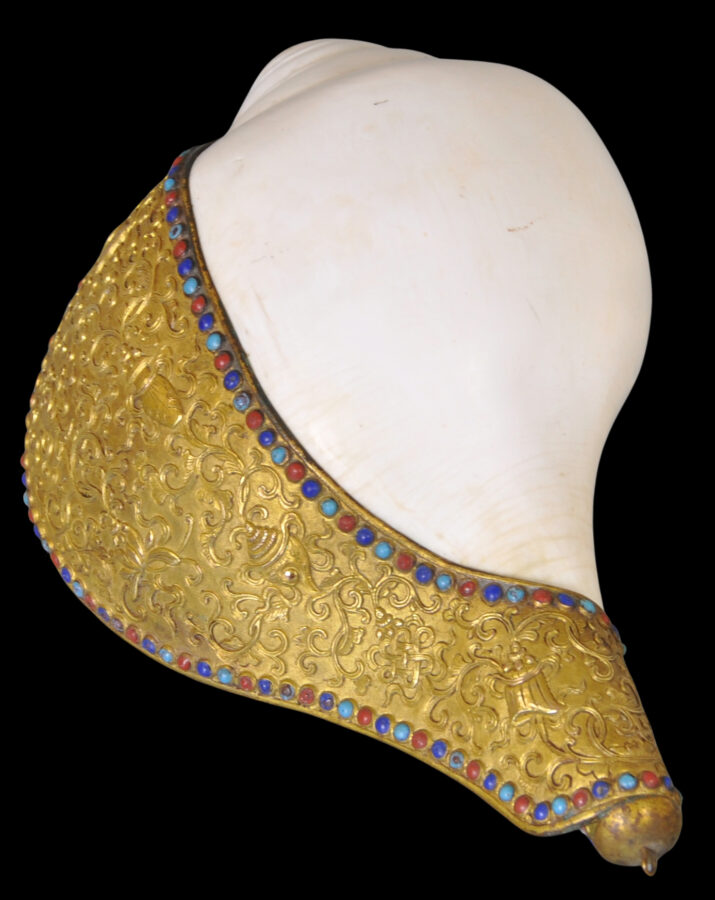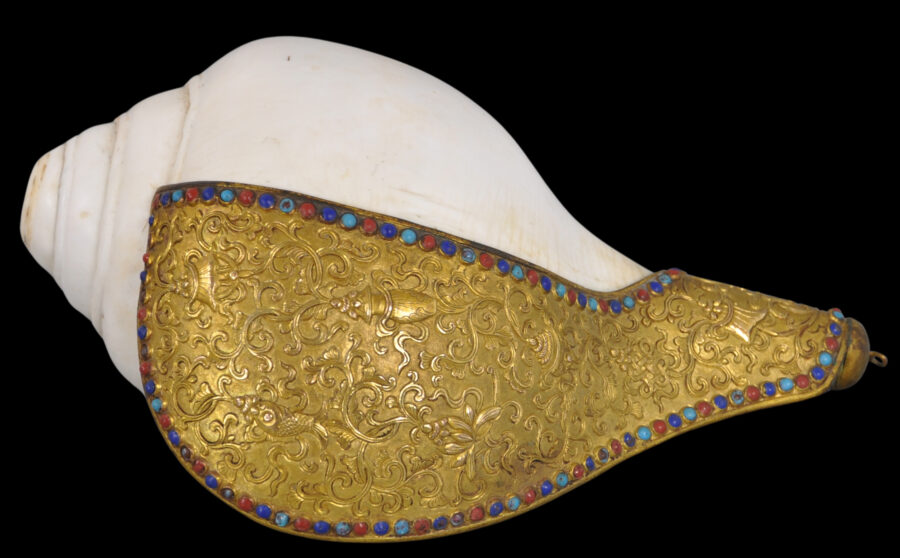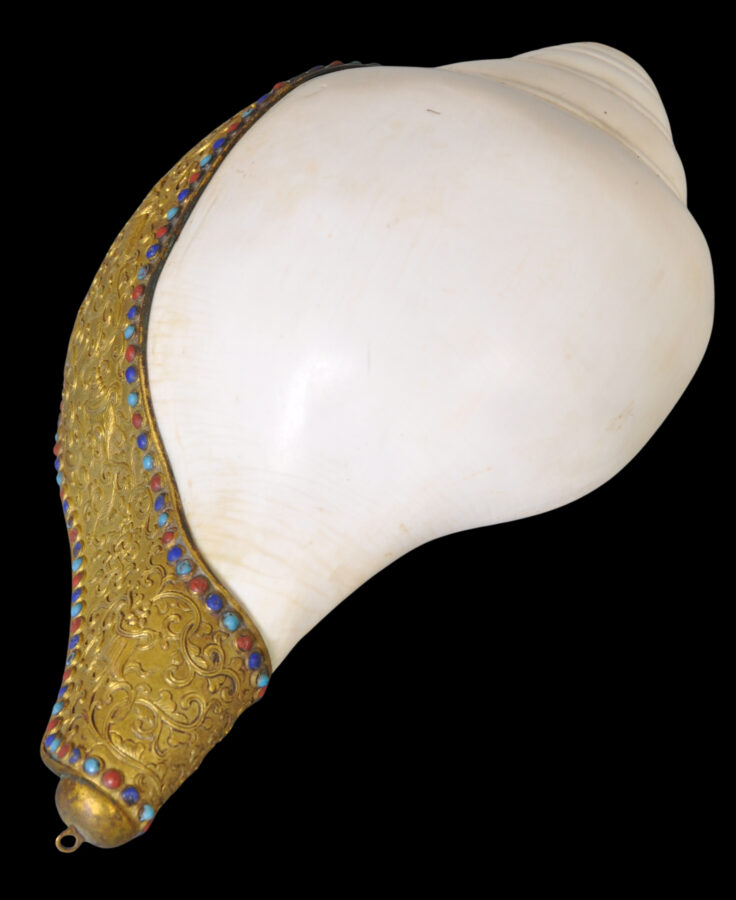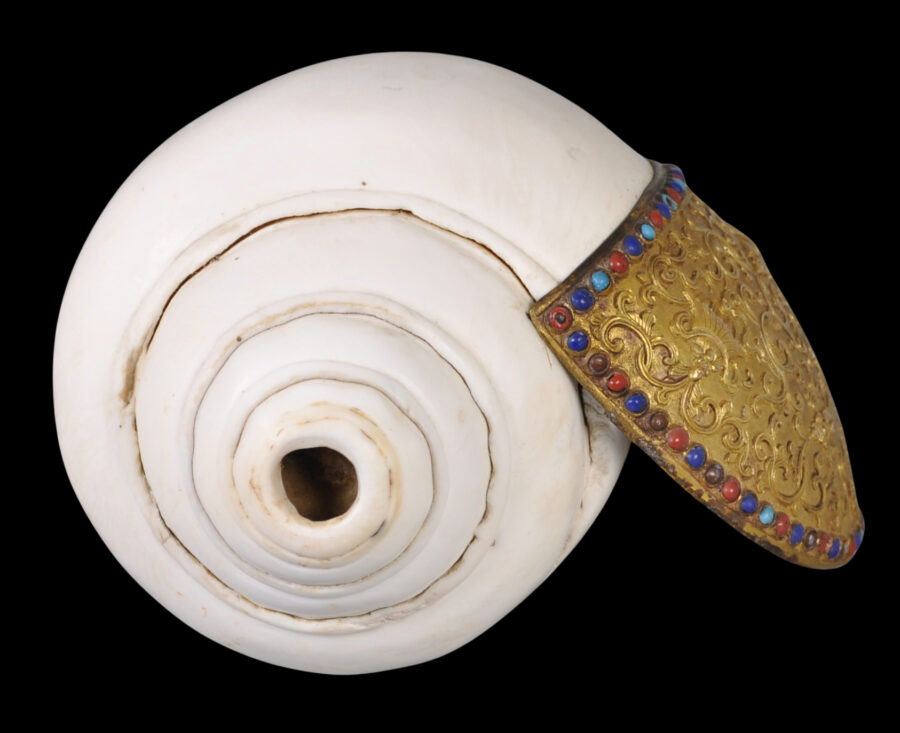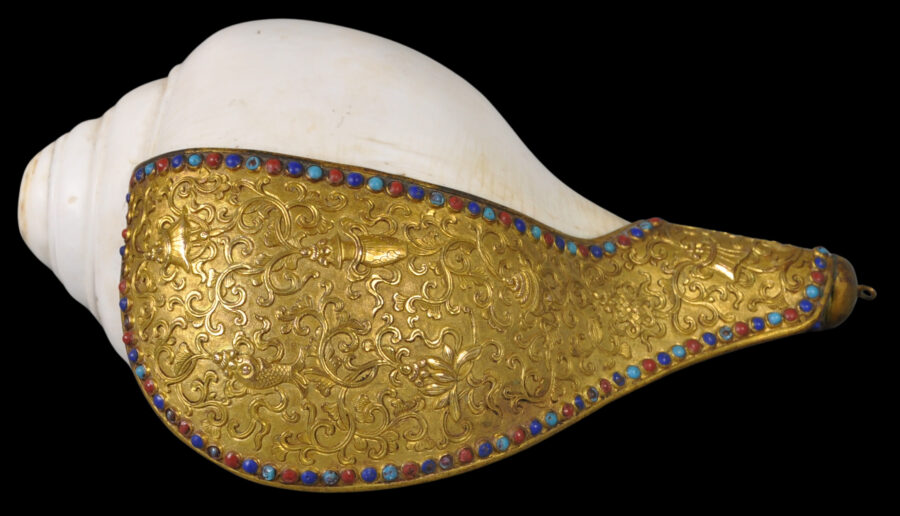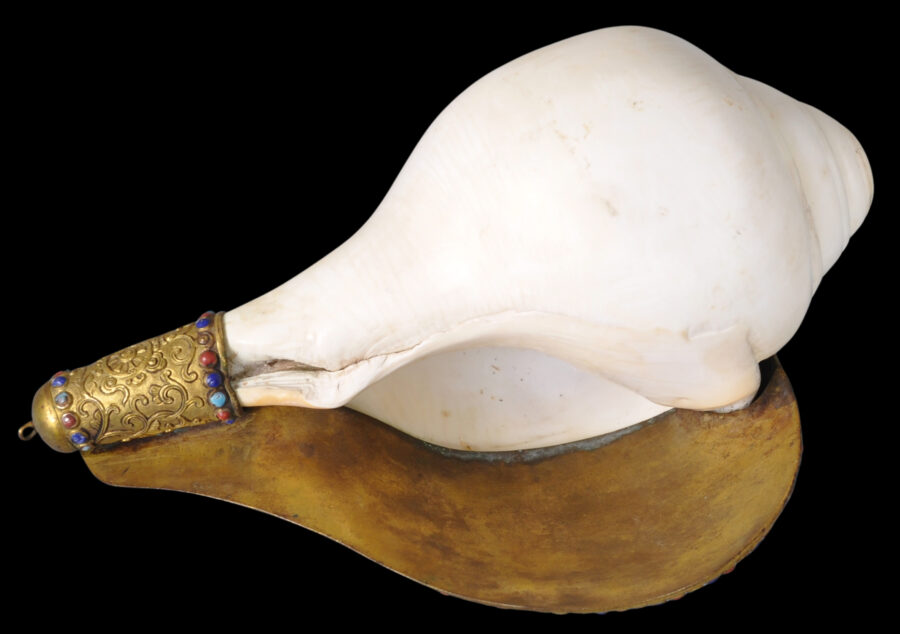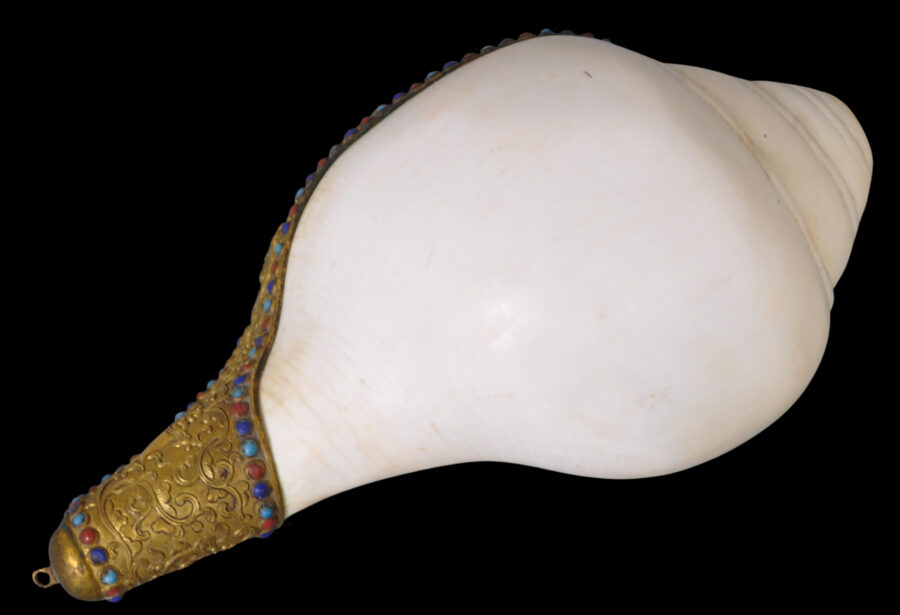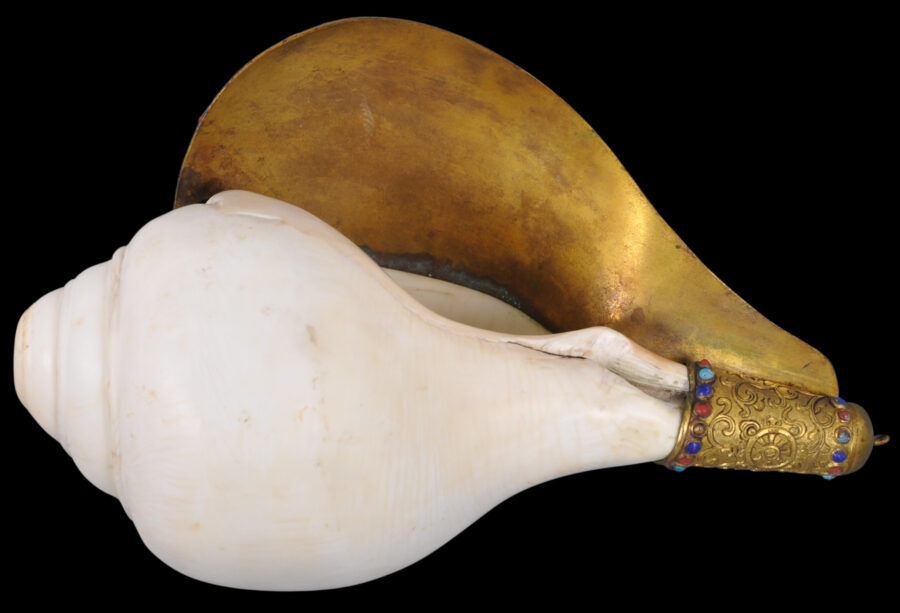Enquiry about object: 9534
Sino-Tibetan Conch Shell Trumpet with Gilded Copper Mounts
Sino-Tibetan 18th century - most probably Qianlong period (1736-1795)
length: 22.2cm, width: approximately 13.5cm, weight: 1,129g
Provenance
Derek Wright (1927-2022) collection, Fritham Grange, Hampshire., UK. Acquired by the previous owner from Gerard Hawthorn Ltd Oriental Art, London, June 2004.
This rare ‘conch’ trumpet with gilded copper mounts comprises a finely polished shell that is mounted with a gilded copper flange which has been repoussed in relief with the Eight Auspicious Symbols amid scrolling lotus stems and leaves. The flange is double-shinned, so that the underside is smooth and gilded. The edge of the flange has been inset with a border of turquoise and coral-coloured enamel cabochons.
The unusually ornate work on the gilded mounts suggest that the conch belonged to a particularly high lama.
The end of the conch has a small loop to which a long silk streamer or ribbon could be attached.
The elaborate decoration of conch trumpet shells commenced in Tibet in the 17th century. This conch shell trumpet, however, belongs to a small group of similar ritual conch trumpets produced in China for, or influenced by, the Tibetan market and which feature chased, gilded copper mounts edged with enamel ‘beads’. Each dates to the Qianlong period. It is possible that this and the other shells are products of the imperial workshops in Beijing which produced items for the Court but also items that were to serve as diplomatic gifts. Emperor Qianlong (r. 1736-1795) was fascinated by Tibetan Buddhism and during his reign the imperial arts were heavily influenced by Tibetan religious art.
Such shells usually are referred to as conch trumpets but the shells used are not conch shells but chank shells (Turbinella pyrum). The shell has been converted into a trumpet or horn with the removal of the end of the point to provide a blowing hole.
Such shells are important ritual objects in Tibetan Buddhism. They are used as ceremonial trumpets in prayer rituals, to summon monks to prayer, to summon spirits as well, and to invoke rain and water (Reynolds, 1978, p. 80). Conch shell trumpets have a long history and their use in Tibetan Buddhism has its origins in ancient India.
Related examples include lot 815, Christie’s New York, ‘Indian and Southeast Asian Art’, March 21, 2012, and lot 679, Christie’s New York, ‘Indian, Himalayan and Southeast Asian Works of Art’, March 20, 2019. Another dated to the 18th century in the James and Marilynn Alsdorf Collection and shown at the Art Institute of Chicago is published in Pal (1997, p. 235). Pal suggests that this example might have been made in Derge in Tibet even though it has a Qianlong reign mark. Another is illustrated in Thurman & Weldon (1999, p. 50).
The example here is in excellent condition.
References
Lama, M.N. Ritual Objects & Deities: An Iconography on Buddhism & Hinduism, Lama Art, 2003.
Lipton, B., & N.D. Ragnubs, Treasures of Tibetan Art: Collections of the Jacques Marchais Museum of Tibetan Art, Oxford University Press, 1996.
Pal, P., A Collecting Odyssey: Indian, Himalayan, and Southeast Asian Art from the James and Marilynn Alsdorf Collection, The Art Institute of Chicago/Thames & Hudson, 1997.
Reynolds, V., Tibet: A Lost World: The Newark Museum Collection of Tibetan Art and Ethnology, The American Federation of Arts, 1978.
Shanghai Museum, Treasures from Snow Mountains: Gems of Tibetan Cultural Relics, Shanghai Museum, 2001.
Thurman, R., & D. Weldon, Sacred Symbols: The Ritual Art of Tibet, Sotheby’s/Rossi & Rossi, 1999.


